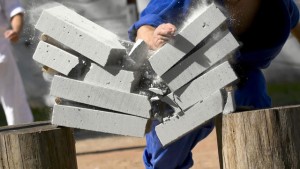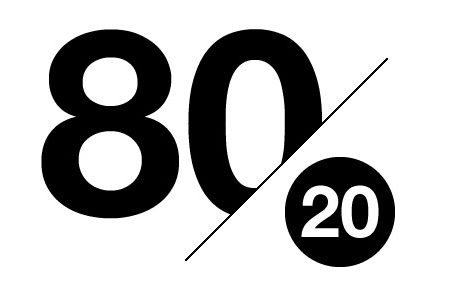It was a hot and humid day in August, and we were quietly walking home from the Kenritsu Budokan (Prefectural Hall of Martial Arts) in Okinawa, where we had spent our whole day.
Time tends to fly by in there.
The Budokan, as most people simply call it, is a place where many various martial arts gather under one roof. Though most people think Karate, Kobudo, Judo and Kendo are about the only martial arts practised in Okinawa, the reality is much more interesting.
I’ve seen both Aikido, Ju-jutsu, BJJ, Kickboxing, Thai Boxing (Muay Thai), Kenjutsu, Submission Wrestling (SW), Kyudo, Iaido, Western Boxing, Jodo, Atarashii Naginata, Ba gua/Pa kua, Dishu Quan and Tai Chi Chuan represented in Okinawa; the “birthplace of Karate”.

That’s a lot for a tiny island.
There’s probably much more.
Anyway, as we were walking home from the Budokan, having witnessed some of the aforementioned martial arts during the day, my Japanese friend who was accompanying me asked:
“So, Jesse-san, have you set a date for when you are leaving Okinawa?”
And that was a perfectly normal question.
I had told him a few days earlier that I would be leaving, so naturally he wondered if I had some fixed date of departure.
The interesting thing is what word he used.
In this phrase, this question, he used a word that is shrouded with mystery in the Western world of Karate, to say the least. Of course my Japanese friend didn’t know this, since in Japanese it’s just a regular everyday verb – but I knew, having heard it, read it and said it numerous times since I first started with Karate.
It was a word that many Karate people in the West claim to understand, but few really do. It is often imbued with magical powers, and the definitions range from trivial down-to-earth stuff to the more extreme esoteric transcendental kind.
It sounded so comfortable and easy to him, when he said it.
And the word, as you might have figured out, was… “kime”.
Probably breaking at least ten or twelve different kinds of world records in terms of ambiguity, kime is a word that, in the Western world of Karate, is as popular as it is misunderstood. But that’s not the case in Japan. On that sunny day in Okinawa, when my friend asked me “what date I had set for my departure”, he used the word kime like it was nothing. Just a word among words.
To him it simply meant “fix“, or “set”.
As in fixing, or setting, a date.
And that’s exactly what my dictionary tells me:
Kime(ru) – ichidan verb; transitive verb – to decide, fix or set.
Yet, when I look around the web, I find the word kime being repeatedly misused. And frankly speaking, I don’t know why.
Maybe we are a bit afraid that some of the exoticism of Karate will be lost if we fully understand the terms we use? The definitions of kime vary, and it surprises me that even some of the most famous Western historians (no names mentioned) doesn’t seem to understand the word they are trying to explain.
Look:
“It is the ability to rapidly dump power into the target which is ‘kime’.”
Or how about:
“The point is you accelerate into the target and you kime focuses the energy inside [the target] rather than through. Very difficult to explain in words […]”
Or:
“I tend to think that ” kime ” is just the best someone could come up with describe what the rest of us would call a serious whack with intent.”
Here’s another:
“To me it [kime] is about “shocking” the opponent. Applying your maximum force so quickly that the opponent cannot adjust to the impact either consciously or unconsciously.”
Other legendary explanations involve “that snap of the gi at the end of a punch” or “destructive force/power”. Some people even claim:
“Use the snap [of the gi] as a barometer of kime, or martial arts focus”
How about that?
Even the almighty Wikipedia says kime means “power, and/or focus” and even “attacking a pressure point” (!)
And the incredibly fun, yet sad, thing is… that it’s all wrong.
These above quotes are for the most very intelligent and good (except that snap barometer thing maybe!), and they all apply to Karate in one way or another, but it’s not kime.
Sorry.
Somebody pulled a fast one on you.
You are better off using other terms, like “chinkuchi” or “kimochi” for even more mysterious Okinawan Karate words, or why not simply the Japanese “zentai ryoku” – full body power?
The coach of the Japanese national team uses it frequently.
But then again, it’s not quite as catchy…
So, to sum it up, kime is not any of the following:

- snap of the gi
- serious intent to whack somebody
- full commitment to a strike
- shocking the opponent
- dumping power into a target
- destructive force/power
- a magical ingredient that makes you a master
But what, then, is kime?
We agreed that the word means to fix, or decide etc, but how do we apply this concept – practically speaking – into our Karate? Where do we find, where do we see, where do we feel kime?
The answer is as brilliant as it is short:
“In any technique you wish”.
Whenever you tense your antagonists, you “produce” kime.
(And for those of you that never cared to look up basic anatomy, “antagonist” is a classification used to describe a muscle that acts in opposition to the specific movement generated by the “agonist” and is responsible for ultimately returning a limb to its initial position.)
Kime is nothing more than that.
Fixating.
You do it in blocks, punches, kicks, strikes and even stances.
For instance, when I trained with the Japanese national kata team (in Okinawa) they even had special, specific, drills for improving kime in stances, like shiko dachi, neko-ashi dachi and zenkutsu dachi. During these intense sessions they said “kime” more times than I could count.
And they never wanted to “seriously whack somebody with full commitment and serious deadly intent with their godly destructive power of snap”. That’s something completely else.
They just wanted to fixate their movements as quickly as possible. The quicker you do that, the more (actually, “better” is a better word) kime you have.
Lastly, let me show you one of the greatest masters of kime in the world:
Yeah, that’s right.
Mr. Wiggles.
And he doesn’t even do Karate.
How about that…



25 Comments